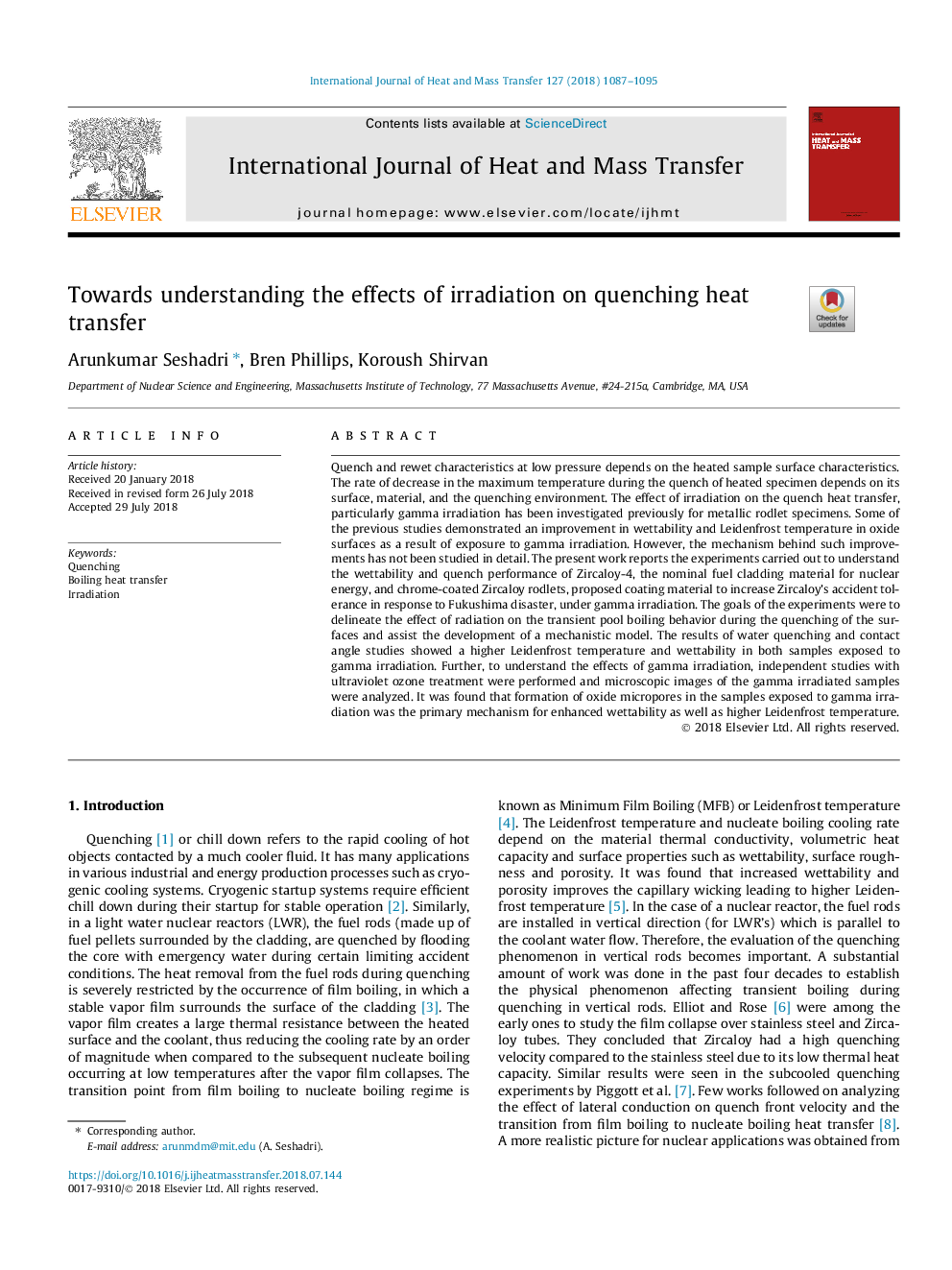| Article ID | Journal | Published Year | Pages | File Type |
|---|---|---|---|---|
| 7053734 | International Journal of Heat and Mass Transfer | 2018 | 9 Pages |
Abstract
Quench and rewet characteristics at low pressure depends on the heated sample surface characteristics. The rate of decrease in the maximum temperature during the quench of heated specimen depends on its surface, material, and the quenching environment. The effect of irradiation on the quench heat transfer, particularly gamma irradiation has been investigated previously for metallic rodlet specimens. Some of the previous studies demonstrated an improvement in wettability and Leidenfrost temperature in oxide surfaces as a result of exposure to gamma irradiation. However, the mechanism behind such improvements has not been studied in detail. The present work reports the experiments carried out to understand the wettability and quench performance of Zircaloy-4, the nominal fuel cladding material for nuclear energy, and chrome-coated Zircaloy rodlets, proposed coating material to increase Zircaloy's accident tolerance in response to Fukushima disaster, under gamma irradiation. The goals of the experiments were to delineate the effect of radiation on the transient pool boiling behavior during the quenching of the surfaces and assist the development of a mechanistic model. The results of water quenching and contact angle studies showed a higher Leidenfrost temperature and wettability in both samples exposed to gamma irradiation. Further, to understand the effects of gamma irradiation, independent studies with ultraviolet ozone treatment were performed and microscopic images of the gamma irradiated samples were analyzed. It was found that formation of oxide micropores in the samples exposed to gamma irradiation was the primary mechanism for enhanced wettability as well as higher Leidenfrost temperature.
Related Topics
Physical Sciences and Engineering
Chemical Engineering
Fluid Flow and Transfer Processes
Authors
Arunkumar Seshadri, Bren Phillips, Koroush Shirvan,
